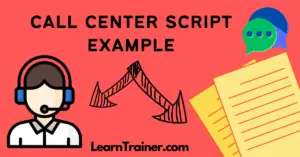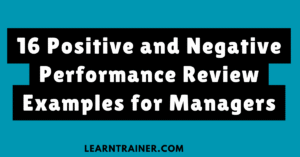We’ve all been there. You’re reading through an email, and it’s wrapping up with the phrase “Regards.”
But then, you get stuck. What exactly should you say back? It might seem like a small detail, but choosing the right response to “Regards” can shape your communication in both professional and casual settings.
Whether you’re sending a follow-up to a colleague, responding to a business partner, or chatting with a friend, how you reply to “Regards” matters.
In this detailed guide, we’ll explore various responses to “Regards,” including examples, practical tips, and insights that will help you know what to say, when to say it, and why it’s important.
I’ve also included some common mistakes to avoid so that you can navigate this small but crucial part of communication with confidence.
Context of “Regards”
The first step in crafting the perfect response is understanding the context. “Regards” can be used in many ways, depending on the tone of the email, the relationship between you and the sender, and the formality of the situation. It’s important to recognize the specific type of “Regards” you’re dealing with.
Best Regards: Often seen in formal or semi-formal communications. It’s polite, professional, and generally safe to use in almost any situation. It’s neutral and friendly without being overly casual.
Kind Regards: Slightly warmer than “Best regards,” but still formal. It’s great for emails where you want to sound polite but not distant.
Warm Regards: Used when there’s a closer relationship. This is common between colleagues who are familiar with each other or in business settings where you want to add a bit of warmth.
Regards: A neutral, straightforward ending that’s appropriate when you don’t need to add extra warmth or formality.
What to Say When You Receive “Best Regards”
“Best Regards” is one of the most commonly used sign-offs, especially in professional or semi-professional emails. The response doesn’t need to be anything overly complex, but it should remain polite and professional.
Best Response:
- “Best regards to you as well.”
- “Thank you, best regards.”
- “Best regards, [Your Name]”
Example 1:
You receive an email from a colleague after discussing a project.
Email from John:
Best regards,
John Smith
Your reply might be:
Your Email:
Thank you, John. Best regards,
[Your Name]
This response is simple, professional, and acknowledges the closing politely without sounding too formal.
When you’re responding to “Best Regards,” I recommend keeping it brief. Overcomplicating your reply won’t add much value. The goal is to reflect the tone of the sender’s message and maintain the professional nature of the conversation.
How to Respond to “Kind Regards”
“Kind Regards” is typically used in more formal or semi-formal emails. This phrase conveys a more personal touch than the neutral “Regards,” but it’s still professional. Responding appropriately ensures that you maintain that level of formality.
Best Response:
- “Kind regards to you too.”
- “Thanks, kind regards.”
- “Appreciate your message, kind regards.”
Example 2:
You’re corresponding with a business partner you’ve met a few times but don’t know too well.
Email from Susan:
Kind regards,
Susan Taylor
Your reply might be:
Your Email:
Thank you, Susan. Kind regards,
[Your Name]
This keeps things professional, and the response mirrors the sender’s tone.
When someone uses “Kind Regards,” it can be a sign they’re taking the time to be considerate. Therefore, acknowledging that extra effort with a kind but professional response is always a good idea.
Responding to “Warm Regards”
“Warm Regards” carries a friendlier tone, often used when the sender feels more familiar with the recipient. If you’ve been working closely with someone or have an established relationship, this sign-off is a way to show warmth without being overly informal.
Best Response:
- “Warm regards to you as well.”
- “Thank you, warm regards.”
- “Appreciate it, warm regards.”
Example 3:
You’ve been working with a colleague on a team project for a while, and they send an email that ends with “Warm regards.”
Email from Emma:
Warm regards,
Emma Green
Your reply could be:
Your Email:
Thanks, Emma! Warm regards,
[Your Name]
Here, you’re mirroring the sender’s warmth while still keeping it professional.
When someone uses “Warm Regards,” it shows a more relaxed tone but still maintains professionalism. It’s a great opportunity to reciprocate and establish rapport.
What to Do When You See “Regards”
When someone uses just “Regards,” it’s typically the most neutral and formal of the closing phrases. While it’s still polite, it doesn’t necessarily carry the warmth or personal touch that the others do. Your response should match this neutrality.
Best Response:
- “Regards.”
- “Thanks, regards.”
- “Regards, [Your Name]”
Example 4:
You receive a straightforward email from a client about a contract.
Email from Mark:
Regards,
Mark Harris
Your reply might be:
Your Email:
Regards,
[Your Name]
It’s short and neutral, matching the tone of the original message.
When “Regards” is used, it’s typically because the sender wants to maintain a professional but not overly warm tone. Responding similarly helps keep the communication clear and concise.
Common Mistakes to Avoid When Responding to “Regards”
While replying to a message with “Regards” seems simple enough, there are a few common mistakes that can make your response seem off or unprofessional. Here’s a quick breakdown of what to avoid:
| Mistake | Why to Avoid | Better Alternative |
| Over-explaining your response | Excessive wording can make your response sound too formal or awkward. | Keep it short and direct. |
| Using informal language when the tone is professional | It can make you seem unprofessional or disrespectful of the sender’s tone. | Match the sender’s tone while keeping things professional. |
| Ignoring the tone of the sign-off | Not acknowledging the sign-off appropriately can come across as inattentive. | Ensure your response matches the tone of the original message. |
| Overusing “Regards” in your reply | Repeating the same sign-off too many times can sound redundant. | Use a variety of polite phrases depending on the context. |
Example of a Mistake:
You receive an email with “Best regards,” and you reply with “Thanks!” While this is friendly, it might not match the formality of the original message.
A better alternative would be:
Your Reply:
Thank you, best regards,
[Your Name]
By maintaining the same tone as the original message, you show respect for the sender’s communication style.
Conclusion
Responding to “Regards” may seem like a small detail, but it plays a significant role in shaping the tone of your communication. By understanding the context, the level of formality, and the intent behind the message, you can craft the perfect response whether it’s professional, friendly, or somewhere in between.

